- Administrator
- Albums and Singles
 Consisting of their first released output since going on hiatus in 2003, this set is a lengthy collection compiling all four Peel Sessions the group performed, most of their b-sides, and their three out of print early EPs before signing with Mute. The result is a five year span of music that will satisfy both the fan who has all of the albums, and the newcomer who has yet to hear anything from the trio.
Consisting of their first released output since going on hiatus in 2003, this set is a lengthy collection compiling all four Peel Sessions the group performed, most of their b-sides, and their three out of print early EPs before signing with Mute. The result is a five year span of music that will satisfy both the fan who has all of the albums, and the newcomer who has yet to hear anything from the trio.
Appliance appeared in the late 1990s as part of the prototypical "post-rock" scene that began to develop, and like contemporaries such as Fridge or Add N to X, mixed dissonant electronic experiments around a more traditional musical framework, equal parts krautrock and that of a non-German variety.Appliance not only used the synths and electronics, but also co-oped the repetition, locking many of their tracks into simple repetitive motifs that never become boring.The early "Number Three Channel is Clear" exemplifies this.Even without much in the way of keyboards or drum machines, the band locks into a Neu! type groove of guitar, bass and drums that goes from meditative rhythms to full bore playing in its relatively short duration.
This doesn’t just characterize their early work, however.While the later songs emphasize the electronics more, they maintain the dedication to repetition, like on the Peel Session take of "As Far As I Can See" from 2002.These later pieces focus more on the electronics, but often retain the guitar parts, such as how the synth textures and drum machines that mostly define "Tuesday Is Nearly Over" are lead by the plaintive guitar notes.The hybrid of technology and traditional instrumentation is reminiscent of New Order’s earlier, better moments.
Other musical references spring up subtly throughout the material here, such as the terse, tentative funk guitar that springs up on the Peel takes of "Mountains 1" and "Fast Music" (which later became "Food Music" upon its official release).While no means infringing on George Clinton's personal territory, it adds a nice element to the mix.Similarly, the death throes of Brit-pop can be heard a few times throughout this set, such as the Stone Roses-esque rhythms and psychedelic guitar moments on "Weightless Conditions" and "In The Event of Just Looking."
My favorite moments appear a lot in the earlier material, which utilizes little or nothing in the way of synths in favor of some unabashed guitar squall, such as "Pre-Rocket Science" or "Throwing A Curve Ball," both of which remind me a bit of Loop or some of Spacemen 3's harsher moments.The other extreme is represented as well, like the meshing of chaotic, noise based synth work with a traditional 'rock band' performance on "Slow Drive."
Often these sorts of collections are too heavily skewed toward one market or the other:either the career retrospective that die-hard fans are compelled to buy, often for only an EP's worth of new material, or a selection of failed experiments and ragged demos that are of little more than historical curiosity.That’s not the case here, where 15 unreleased Peel Session tracks are included, along with mostly out of print and rare material.While die-hard fans may have some of the b-sides or singles already, the Peel Sessions material alone makes this set worthy of interest.Perhaps this is the first step towards a re-activation of the band, and given their legacy presented here, that would be a great thing to happen.
samples:
Read More
- Administrator
- Albums and Singles
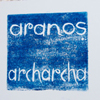 The fact that Aranos's latest album was recorded live at Prague's Archa theater earlier this year is pretty irrelevant, aside from the surprise that one man with a violin is able to conjure up such an unholy cacophony on a stage by himself. Instead, Archarcha is far more notable for being the formal debut of a particularly violent and difficult new long-form piece, the 30-minute "Concerto No. 42 for Violin and HD." Bizarrely, the album also works as a kind of a perversely effective career retrospective, despite the fact that only one of the four pieces has ever been released before.
The fact that Aranos's latest album was recorded live at Prague's Archa theater earlier this year is pretty irrelevant, aside from the surprise that one man with a violin is able to conjure up such an unholy cacophony on a stage by himself. Instead, Archarcha is far more notable for being the formal debut of a particularly violent and difficult new long-form piece, the 30-minute "Concerto No. 42 for Violin and HD." Bizarrely, the album also works as a kind of a perversely effective career retrospective, despite the fact that only one of the four pieces has ever been released before.
Archarcha consists of four lengthy pieces that each explore a different facet of Aranos’ lengthy and constantly shifting evolution.Naturally, given the eccentricity of his muse, such an undertaking is necessarily incomplete: there aren't any conspicuously electronic textures, for example.Nevertheless, quite a bit of ground is covered and Aranos seems equally adept throughout at lurching, deranged cabaret, quasi-Buddhist ritual music and the many odd places in between.
The album opens with a shimmering and absolutely beautiful wood flute-based ambient piece entitled "Flight of the Dung Beetle," which seems like gentler take on the Tibetan-influenced work on 2008's Samadhi (no singing bowls this time around).It is actually a fairly richly meaningful and appropriate title too, though I initially thought it was merely an impish allusion to "Flight of the Bumblebee."Dung beetles spend their lives digging through shit and actually fight with other dung beetles over it, but the Scarab varieties were considered a sacred symbol of transformation in early Egypt, so there are some deep metaphors to sift through for those inclined towards such things.Aranos keeps the Zen Drone-Lord reverie going for the next piece as well, breaking out his violin for 20 minutes of mesmerizing bowed and plucked perfection after a brief vocal interlude.Aranos' more drone-themed work is definitely my favorite phase of his career and this is some of his best.
The album's serene and heavenly first half comes to a very abrupt and brutal end, however, with the beginning of the aforementioned "Concerto No.42 for Violin and HD."The primary motifs of the piece are violently sawed and pitch-shifted violins, echoing sinister squeals and creaks, and deep throbbing and shuddering, but it shifts quite a bit of the course of its viscerally unfolding nightmare.Of course, it never shifts into anything that is not uncomfortable, dissonant, or disturbing though–at least not until the end, where it becomes a kind of lumbering tango.I am pretty conflicted about the piece as a whole, as it is an undeniably imaginative, virtuosic, and awesome tour de force, but it is so overwhelming and jarring that I am in no hurry to experience it again anytime soon.I felt the same way about Lars von Trier's Dancer In the Dark too, so I guess Aranos is at least in good company.
Amusingly, the set concludes with an Aranos classic from 1999's Making Love in Small Spaces, the off-kilter "pop" of "Beams of Sunshine."It feels kind of like he finished playing "Concerto," squinted at the audience through the glare of the spotlights and exclaimed "Wow- you guys are still here?Hmmm…. I guess I'll play something you know then."I have never personally appreciated Aranos's vocal pieces as much as his abstract work, but in this context it makes a refreshing and palate-cleansing end to a very strong set, easing the jangled nerves of the brave souls who made it that far.Archarcha is probably the most condensed representation of Aranos’s skewed brilliance that I have yet heard, so anyone curious about him would be well-served to start here–a person would have to be either deaf or dead inside not to appreciate at least "Flight of the Dung Beetle." It may get pretty snarling and harrowing at times, but this is definitely one of the absolute highlights of the Aranos oeuvre.
Samples:
Read More
- Administrator
- Albums and Singles
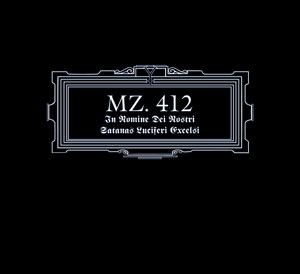
Artist: MZ. 412
Title: In Nomine Dei Nostri Satanas Luciferi Excelsi
Catalogue No: CSR136CD
Barcode: 8 2356649952 7
Format: Spot-varnished digipak
Genre: Black Industrial
Shipping: Now
1995 bore witness to the resurrection of nefarious Swedish horde MZ. 412 (previously manifest as Maschinenzimmer 412) - Nordvargr, Drakh, Ulvtharm and Shaitan. This ground-breaking, genre-defining album saw the inventors of "Black Industrial" blur the boundaries between Black Metal, Ritual Industrial, Dark Ambient and Power Noise. "In Nomine..." captures the darkest sides of Satanism, death and ritual sacrifice. An enduring, blasphemous statement of True Swedish Black Industrial.
This remastered version features two previously unreleased tracks, alternate versions and all new artwork. Housed in a matt digipak with spot varnishing.
MZ. 412 headline Cold Spring's 21 Year Anniversary party at the Garage, London, 5th March 2011.
Tracks: 1. Black Earth | 2. In Nomine Dei | 3. Salvo Honoris Morte | 4. Necrotic Birth | 5. Daemon Raging | 6. God Of Fifty Names | 7. In Ritual Of Blood And Oath | 8. Regie Satanas | 9. P. C. S. | 10. Hail The Lord Of Goats | 11. Surge 2 | 12. Infinite Hollow
Read More
- Administrator
- Albums and Singles
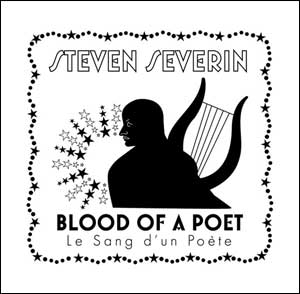
Artist: Steven Severin
Title: Blood Of A Poet
Catalogue No: CSR135CD
Barcode: 8 2356650482 5
Format: Digisleeve with innersleeve
Genre: Dark Ambient / Soundtrack
Shipping: Now
Acclaimed solo artist and founding member of the legendary Siouxsie And The Banshees, Steven Severin’s debut album for Cold Spring Records is titled "Blood Of A Poet (Le Sang d’un Poete). This album is his entire soundtrack to Jean Cocteau’s 1930 black & white surrealist classic and is the second in his ongoing series of "Music For Silents".
During their reign, Siouxsie And The Banshees established themselves as one of the foremost alternative artists and the only survivors of the London punk scene to evolve, innovate and succeed until their final demise in 2002. Severin has since committed himself almost exclusively to scoring for film & TV.
Since May 2008 Severin has been performing live accompaniment to silent films, startling audiences across the globe who have now come to expect the unexpected from the man who has crossed paths with such diverse luminaries as John Cale, Alan Moore, Jarboe, Lydia Lunch, Marc Almond, Merc Cunningham, Robert Smith and the Tiger Lillies. "Blood Of A Poet" received it’s premiere at the Silent Movie Theater in Hollywood in January this year and this October sees Severin embark on his first ever solo tour of the UK hosted by the Picturehouse chain of cinemas, culminating in a performance at TATE BRITAIN on 3rd December.
Tracks: 1. The Wounded Hand | 2. Walking Statues | 3. L'Hôtel Des-Folies-Dramatiques | 4. Glory Forever | 5. The Snowball Fight | 6. The Desecration Of The Host | 7. The Card Sharp & The Angel | 8. The Lyre
Read More
- Administrator
- Albums and Singles
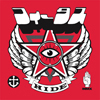 Over the course of his career, Jim Thirlwell has hugely expanded his repertoire with his Manorexia and Steroid Maximus projects as well as soundtrack work; a far cry and a lot more rewarding than my first exposure to him in my teens as a remixer of the likes of Nine Inch Nails. However, no matter what sideline work he does, when he comes back to Foetus it is a guarantee that the music will be brilliant. His role as a composer has fed progressively more into Foetus (fitting considering the seeds of Manorexia were sown and germinated in earlier Foetus albums) and Hide has a much wider scope than previously encountered.
Over the course of his career, Jim Thirlwell has hugely expanded his repertoire with his Manorexia and Steroid Maximus projects as well as soundtrack work; a far cry and a lot more rewarding than my first exposure to him in my teens as a remixer of the likes of Nine Inch Nails. However, no matter what sideline work he does, when he comes back to Foetus it is a guarantee that the music will be brilliant. His role as a composer has fed progressively more into Foetus (fitting considering the seeds of Manorexia were sown and germinated in earlier Foetus albums) and Hide has a much wider scope than previously encountered.
A massive choir (which in true Foetus style is actually one opera singer, Abby Fischer, layered over herself) on "Cosmetics" opens the album sounding like Ennio Morricone conjuring up one last soundtrack for the end of time. This choral element runs through the album at a subliminal level; faint voice-like sounds permeate "Here Comes the Rain" as Thirlwell whistles and croons over the sumptuous music. On this piece and indeed across most of Hide, there is a strong soundtrack vibe; film noir and the aforementioned Morricone being spliced together with Thirlwell’s own vision. This is nothing new to Thirlwell but on Hide he takes this formula further and gets more out of these different strands than on even his last album Love. He brings new influences to bear on "Oilfields" where the ghost of Giuseppe Verdi and the still-living soul of Arvo Pärt meet.
Yet it would be fallacious to view Foetus as a tribute to various composers as Thirlwell’s own stamp is planted deeply into every song here. Despite so many facets of "The Ballad of Sisyphus" adding up to Morricone worship, it is pure Foetus. The structure, the mood and, above all, the lyrics take the music away from pastiche and plant it firmly in Thirlwell’s universe. Only here could Sisyphus be more of a Wild West outlaw folk hero than a cautionary tale from Greek mythology. By the end of Hide, Thirlwell pushes the music outward and matches the visceral intensity of his first albums with the epic "You’re Trying to Break Me" which successfully marries all of Foetus’ constituent parts into one glorious black whole.
In an interview here on Brainwashed, Thirlwell explained that he initially started work on Hide during the bad old days of George Bush’s presidency and the feeling of being on the brink of disaster haunts his lyrics: "Stay in your homes... ashes over everything." The music pulses with an urgency that matches the paranoia of Thirlwell’s lyrics and the album’s title becomes an imperative command; go underground to escape the inevitable doom. Thirlwell’s black humor puts a sting into the album and in this light it is easy to take the album’s title as an order for those in control as opposed to the little people caught up in the aftermath.
samples:
 
Read More
- Administrator
- Albums and Singles
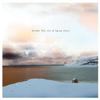 Dying is an art, and like any other one can do it with grace or go down kicking, screaming, all the while leaving a big mess behind that future generations have to clean up. This album is supple and sexy as death itself. There is no fear in these pieces. They convey the final breaths of a human as being elegnant and peaceful. This music displaces the anxiety many people feel about death. Doing so is a service to the world.
Dying is an art, and like any other one can do it with grace or go down kicking, screaming, all the while leaving a big mess behind that future generations have to clean up. This album is supple and sexy as death itself. There is no fear in these pieces. They convey the final breaths of a human as being elegnant and peaceful. This music displaces the anxiety many people feel about death. Doing so is a service to the world.
Electronic music is a wide open field and some of the territories are contested. There are many different areas and modes of activity and anyone who can run a field recording through a couple of filters and slap a few different sounds together is potentially an artist. Luckily for those who listen closely shoddy work is easily spotted. It is also simple to know the difference between clinical music that is more apt to be used for self-induced psychic surgery than that which conveys the full range and expression of human emotion. Sometimes I’m more inclined to listen to music whose theoretical underpinnings bring as much or more enjoyment than the actual piece itself. At other times I just want to tap into the raw nerve of human experience. The output of Brock van Way easily falls into this second, non-pretentious category as he creates gorgeous ambient sound worlds that are accessible, welcoming and a joy to inhabit.
Inhabit is an apt word to describe these songs. They create a cacoon and cushion of calm. Taking a break from the 21st century's frenetic pace to collect oneself is easy to do while this soundtrack is playing. It is musical medication for attention deficit disorder. It gives a person the space necessary to contemplate life from the vantage point of someone who is about to move beyond life, which holds tremendous value. Questions of purpose begin to percolate. Have I frittered away all my time chasing empty illusions? Is there something more I could have done, someone's life I could have improved, a contribution only I could have made, that I failed to? Did I express love in my relationships? Will I approach death full of regrets or with grace knowing I gave my all? There are so many people who are averse to even talking about dying and these songs create a context to open up the conversation. Contemplating death can be a powerful kick in the pants for those with no direction. I can’t count on the Singularity. My time here is limited. I should create something beautiful.
These are the types of thoughts that spin around in my head as I listen to the warm electronic textures of altered and layered voices so prevalent throughout the six long songs. The vocal elements of this disc are my favorite aspect of this recording, though the smooth curves of synth, the repetitious pulsings of delicate piano, the minimal and softly understated percussion elements that give it just enough of a beat all work in harmony together. The longest track, "To Finally Forget It All," at nearly 22 minutes creates a luxuriant atmosphere. I don’t know how Brock does it, but there are several female voices, simpering, cooing, calling out. I can’t help but think that a choir of angels or the voices of my ancestors are calling out to me from the other side, ready to greet me when my time comes.
There is a great continuity between each song. Each builds on the beauty of the previous and as a listener I sail right along. On "No More Reason Not To Fall" a looped string section fragment forms the kernel around which the voices kaleidoscopically revolve. A rattle or brushed snare drum trickles in the background. A dissonant element gradually comes to fore giving the piece an abundant sense of gravity and urgency. Things are peaceful again with fluid acoustic guitar inflections on the next song. The title track closes the album with another epic long player. The sounds cascade reminding me of water falls, the roar of the ocean surf crashing against a slew of granite rocks. But the tide goes back out in the end, leaving with a sprinkling of piano and a lulling mellow drone.
With The Art of Dying Alone Glacial Movements have released their warmest and most inviting CD yet. This electronic music warms hearts and melts ice.
samples:
 
Read More
- Administrator
- Albums and Singles
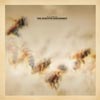 Although specifically composed to soundtrack a documentary about Colony Collapse Disorder called "The Vanishing of the Bees," The Effective Disconnect is not a dramatic departure from the sort of thing Brian McBride has always done extremely well: subtle and serene music with an undercurrent of sadness. As such, it basically feels more like a scaled-back follow-up to 2005's excellent When Detail Lost Its Freedom than an unrelated side-project. It's probably much too subtle to accomplish much in the way of garnering of new fans, but it is certainly a pleasant diversion for those of us converts waiting around for something more substantial to surface from the Stars of the Lid camp (like that damn feature film that seems to have disappeared).
Although specifically composed to soundtrack a documentary about Colony Collapse Disorder called "The Vanishing of the Bees," The Effective Disconnect is not a dramatic departure from the sort of thing Brian McBride has always done extremely well: subtle and serene music with an undercurrent of sadness. As such, it basically feels more like a scaled-back follow-up to 2005's excellent When Detail Lost Its Freedom than an unrelated side-project. It's probably much too subtle to accomplish much in the way of garnering of new fans, but it is certainly a pleasant diversion for those of us converts waiting around for something more substantial to surface from the Stars of the Lid camp (like that damn feature film that seems to have disappeared).
When they were initially discussing this project, the filmmakers suggested that Brian to try evoke the "gloriousness of bees" (among other things) with his score, a task that he made a sincere but ultimately doomed effort to accomplish.Brian McBride is incorrigibly Brian McBride and that is what makes all of his efforts so reliably enjoyable.Heavy-handed, heroic concepts like "glory" simply don't fit into McBride's world of understated, floating melancholy.I, for one, am perfectly fine with that, though Brian himself has modestly lamented that his album is "more appropriate for a different and more forlorn film." Despite his self-deprecation, quite a few rays of light manage to break through the clouds over the course of the album–most effectively in "Supposed Essay on the Piano," where beautifully warm strings and horns glide across the somberly pulsing piano chords.To my mind, the muted and somber atmosphere seems perfectly attuned to the subject matter anyway, as The Effective Disconnect makes a suitably enigmatic and sublime elegy for the millions of bees that abruptly and mysteriously dropped dead in 2007.      
Nevertheless, though I consider the album both a success and a worthy addition to the SOTL oeuvre, it is a bit too compartmentalized to be as engrossing as McBride's previous work.That is an inherent peril in composing a soundtrack, obviously, but it is unfortunate that some of Brian's better ideas are not given more time to unfold and develop.There is definitely a decreased emphasis on repetition here, as themes come and go much faster than usual.That step away from one of McBride's strong points, however, is nicely balanced by a new emphasis on strong melody.In fact, there are some absolutely heavenly moments captured here, such as the chime and string motif in "Beekeepers vs. Warfare Chemicals," that easily stand with anything Brian has done to date. The Effective Disconnect is definitely not lacking in stellar material, but it is presented in a way that handicaps its effectiveness as a whole.This album feels like kind of a Brian McBride sampler platter, showcasing everything that makes him wonderful (spaciousness, an elegant melancholy, soft-focus haziness, etc.) but never plunging completely in.Still, the seeds of an artistic breakthrough may be taking root here, as a more substantive, long-form work in this vein (though maybe with a bit more grit) has the potential to be McBride's future masterpiece.
Samples:
 
Read More
- Administrator
- Albums and Singles
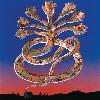 There are very real reasons why Cyclobe albums are so infrequent, as Ossian Brown and Stephen Thrower seem to deliberately eschew or expertly conceal most of the tools that similar artists rely upon (improvisation, chance/randomness, repetition, etc.) in favor of a constantly shifting and deliberate abstract narrative. There is a purposefulness and articulation to Cyclobe’s brand of psychotropic mindfuckery that is very much their own. Their best work (such as this album) feels like a twisted, meticulously composed infernal symphony or an ambitiously nightmarish film soundtrack for a film that no one could possibly make. Wounded Galaxies evokes something far too extreme and abstract to capture with words and images: a deep, timeless, all-consuming cosmic terror.
There are very real reasons why Cyclobe albums are so infrequent, as Ossian Brown and Stephen Thrower seem to deliberately eschew or expertly conceal most of the tools that similar artists rely upon (improvisation, chance/randomness, repetition, etc.) in favor of a constantly shifting and deliberate abstract narrative. There is a purposefulness and articulation to Cyclobe’s brand of psychotropic mindfuckery that is very much their own. Their best work (such as this album) feels like a twisted, meticulously composed infernal symphony or an ambitiously nightmarish film soundtrack for a film that no one could possibly make. Wounded Galaxies evokes something far too extreme and abstract to capture with words and images: a deep, timeless, all-consuming cosmic terror.
It is both fitting and remarkable that Brown and Thrower met through their associations with Coil.On one hand, there are enormous similarities between the two groups: a deep fascination with both the occult and obscure transgressive art, overlapping collaborators like Thighpaulsandra, the use of similar electronic textures, and so on.On the other hand, however, Cyclobe has wound up in such a completely different place that it is almost difficult to imagine that the two were ever intertwined.Cyclobe sounds like Coil's id allowed to run rampant.Ossian and Stephen certainly display a predilection for all things eerie and nocturnal, but they seem to be chasing an altogether more difficult, disturbing, snarling, and visceral vision.No one will ever confuse a Cyclobe album with ambient music.
That said, however, the first side of the album begins with some deceptively haunting and beautiful synthesizers that suggest otherwise.That feeling doesn't last long though, as "How Acla Disappeared From the Earth" quickly grows darker and more uncomfortable as more and more sounds fade in.It is one of the shorter works on the album, so it doesn't have much time to evolve; yet it features some truly wonderful gurgling and shivering weirdness in its periphery.The next song, "The Woods Are Alive with the Smell of His Coming," completely eclipses it though.
Cyclobe’s "17-minute Pagan opus" was actually debuted on its own last year as part of an exhibition at The Tate Gallery St. Ives and it is easy to see why: it is not only the centerpiece of the album, it may possibly the defining moment of the duo's career.It is built upon a simple, yet darkly exotic backbone of kalimba and Michael York’s pipes–a foundation that doesn’t change that much over the course of the piece, serving mostly as a rhythmic anchor for the surrounding maelstrom. The real excitement lies in what unfolds on top of it, as I am amazed at how many ingenious variations of "all hell breaking loose" Thrower and Brown are able to unleash: violent, discordant cello solos from John Contreras; squealing strings that sound like the swirling spirits of the damned; horrific orchestral cacophonies; and a deep creaking like the very fabric of the universe is straining and about to rupture.It is, quite simply, an utterly staggering work.
The album's second half again begins in much calmer, uncharacteristically droning fashion with "We'll Witness the Resurrection of Dead Butterflies," but its opening motif is quickly subsumed by Cliff Stapleton’s Arabic-sounding hurdy-gurdy permutations.The piece eventually reaches a bit of a lull before being torn apart by a violent series of apocalyptically crushing stabs of ugly harmony separated by quivering aftershocks.It feels like the actual earth is shuddering in terror–loud, unexpected, visceral, and awesome.
Gradually, the relentless bludgeoning gives way to some less alarming subterranean moans and rumbles and a delicately haunting piano theme takes shape over a buzzing bed of squiggling electronics.The piano piece is "Sleeper," but it is difficult to tell quite where it officially begins due to my inability to pinpoint the moment of segue."Sleeper" is something of an aberration for the album, as it actually features some odd and creepy childlike vocals from Ossian Brown.In all other respects though, it fits in quite nicely, as the piano gradually becomes more chromatic and unmoored and the underlying music begins to lurch and swell thunderously.The title piece follows, perfectly closing the album by mangling a simple drone piece into massive swells and jarring paroxysms of dissonance.It actually has a disturbingly post-coital feel to it at times.I am curious about whether or not that was intentional, as Thrower has stated in the past that he feels that there is a "capricious sensuousness" to Cyclobe's music.It is difficult and a bit unnerving to try to imagine sex as deviant and alarming as Wounded Galaxies though.
The whole thing adds up to a rather overwhelming, unnerving, and utterly absorbing listening experience.I am fairly certain that my heart rate increased quite a bit over the course of the record, as there was no way to remain calm in the face of such disturbed content and violent dynamic shifts.It was kind of like being attacked, actually.That probably isn't an experience that appeals to most people, but Wounded Galaxies is certainly one of the most immediately striking and singular albums that anyone will release this year (and definitely the only album that can be described with phrases like "rapturous cosmic convulsion").I don't think Brown and Thrower are particularly concerned about appealing to "most people" anyway.Despite all of its more overt charms, however, I suspect Galaxies’ greatest achievement may lie in its sheer depth and complexity: there are all kinds of layers and textures that I was far too shell-shocked to appreciate during my first several listens.This is a very hard album to fully process and I don't expect to get tired of it anytime soon.
Sample:
 
Read More
- Administrator
- Albums and Singles
 This trio's approach is similar at times to the musical cubism of the Magic Band but at others they go into overdrive to create a maelstrom of sound without ever completely abandoning melody and rhythm. The group's name evokes the devil, Freemasonry, and Doctor John R. Brinkley's testicular transplants.
This trio's approach is similar at times to the musical cubism of the Magic Band but at others they go into overdrive to create a maelstrom of sound without ever completely abandoning melody and rhythm. The group's name evokes the devil, Freemasonry, and Doctor John R. Brinkley's testicular transplants.
Udders collects songs from previous vinyl releases and adds one new track. Even the shortest of the nine pieces contains an intriguing range of pace and mood. "Derek & Dot" for example, goes from brooding splutter to accelerating guitar to a meltdown crescendo of bass, drums and guitar. The mood throughout is intense and anxious. I particularly like the way that the bass guitar is sometimes used almost like a bell, to keep time, while the other instruments flow around it. "Varicose Jibs" is one of several wonderfully punishing slaps around the ears. A sort of relief, or contrast, comes on "Jipper Flow," with a slower pace, scratched guitars and fluttering drums.
Honey Ride Me A Goat’s website provides a sense of humor to go with the intensity and uncompromising turn-on-a-sixpence nature of their music. There are many pictures of curry and odd messages such as "due to certain circumstances we can’t play in Sheffield any longer." Another picture shows one member of the group in an apron: obviously a reference to Freemasons who are said to use the initiation practice of "riding the goat." Greek and Roman versions of Pan depicted a goat which Christianity then adopted to depict Satan, who in The Middle Ages was rumored to appear at witch orgies riding on a goat. Goat imagery was thus transferred onto Freemasons to taint them as evil in the common, suspicious, superstitious mind. I suppose modern day conspiracy theorists could easily point to the fact that the President of the USA was reading "My Pet Goat" while the Twin Towers were attacked to perpetuate the notion that "evil" won't rest until Earth is destroyed by Babylonian Gods of War and the victorious goat resides in heaven. All of which might explain why the bees are disappearing at the same time as swarms of bald guys with goatees seem to be everywhere.
Musically, Honey Ride Me A Goat attack their instruments with true skill; they have the chops to bash out an unholy racket and (instrumentally) quote from the wilder side of musical history. Their music ends up balanced, unpretentious, and pretty accessible. Overall, the most jumbled and tangled sections of this album are the most relaxing since there is a sense of utter abandon to those parts. Ordinarily, I prefer short, sharp shocks of the sort of aggressive, wild sprawl and quasi-mathematical structures which we can hear on Udders. Longer pieces such as "Ethel," however, work well and have enough engaging twists and turns to satisfy. There are even some wordless vocals at the end of that song.
If Honey Ride Me A Goat ever broaden their sound with some lyrics I hope they consider the advertising devices of Doctor John R. Brinkley. In the US Depression he made millions by adding slices of goat gonad to the scrotums of willing rich suckers wanting to get back their old potency. Profits from his nuts-into-nuts transplants were used to fund his mega-watt radio station blaring music and ads for his services (laced with biblical verse) from Del Rio on the Texas/Mexico border all the way to New York City. The limp wealthy flocked to shower him with cash in the hope of returning to youthful vigor. Accusations of blasphemy and quackery poured down upon the goatee-sporting Brinkley. His station was once the most powerful on Earth, a million watts which drowned out everything else. On a clear day it reached Europe and people complained they could pick it up in their tooth fillings. Honey Ride Me A Goat's music is potent and life-affirming; and may well rattle a few fillings before they are done.
samples:
Read More
- Administrator
- Albums and Singles
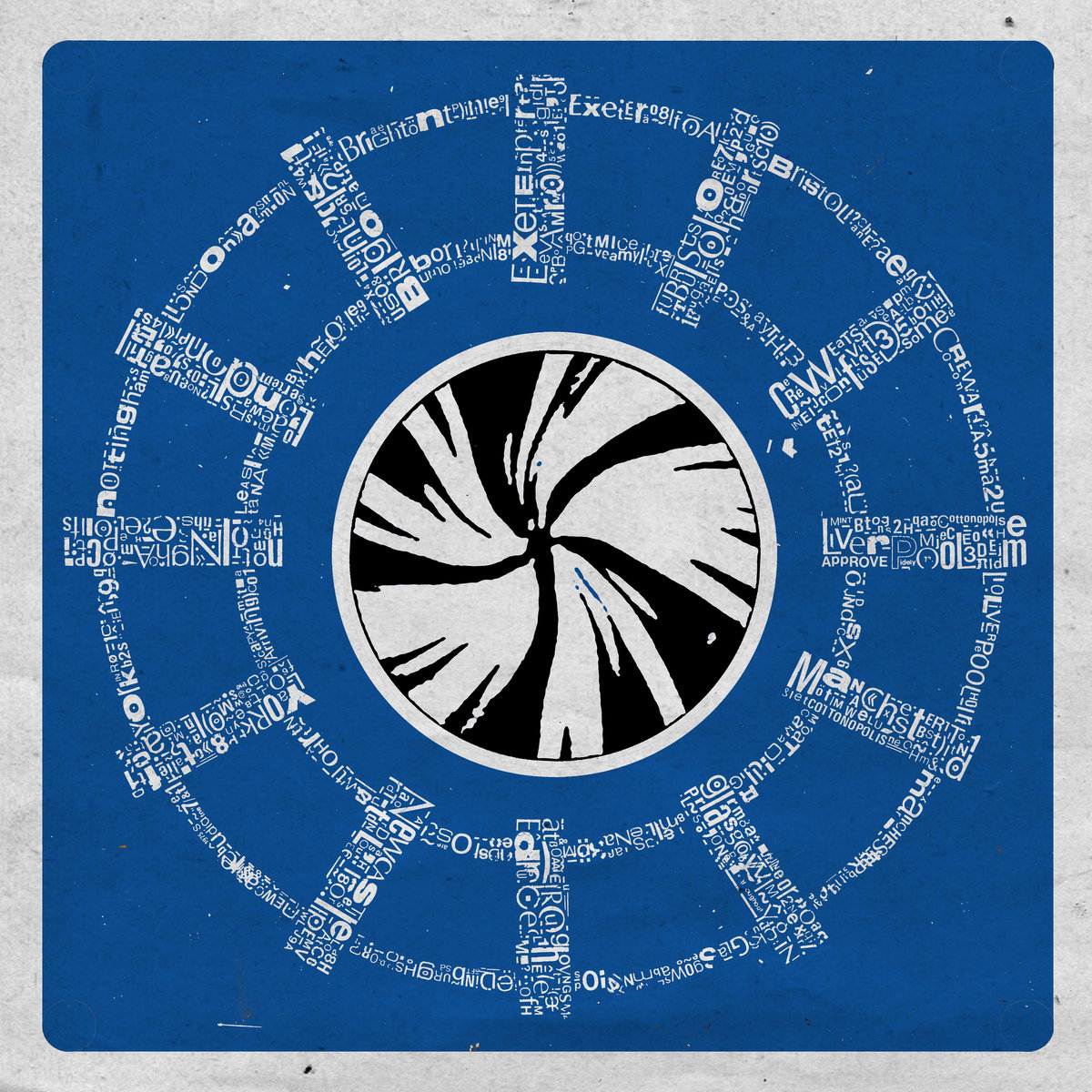 Over the course of ten days twelve railway stations were visited and at each a thirty second sound recording and photograph were taken. During the train journeys, compositions were sketched onto scores and later recorded at one rehearsal evening with The City of Exeter Railway Brass Band. The twelve short tracks reflect those brief encounters, hint at the unrealized possibilities and fleeting nature of human life, and seek majesty in insignificant events. Less than eight minutes long and organized into two sections, a reissue of Twelve Stations is overdue.
Over the course of ten days twelve railway stations were visited and at each a thirty second sound recording and photograph were taken. During the train journeys, compositions were sketched onto scores and later recorded at one rehearsal evening with The City of Exeter Railway Brass Band. The twelve short tracks reflect those brief encounters, hint at the unrealized possibilities and fleeting nature of human life, and seek majesty in insignificant events. Less than eight minutes long and organized into two sections, a reissue of Twelve Stations is overdue.
Listening to this recording is like walking along a dark street in winter and hearing a band playing in a hall half a mile away, or removing one brick from a wall in a rain-swept cemetery and straining to hear faint echoes of sound trapped for half a century. But my enjoyment of the brass band sounds, the chuff chuff, platform announcements, tracks clattering, unknown sounds fading, and the clever short duration of this piece, is one thing; context is quite another. I hesitate to compare Twelve Stations with Chris Watson’s El Tren Fantasma, but it can belong in a context also containing Flanders and Swann’s "The Slow Train" — that of a lament. David Chatton Baker's effort is a more abstract encapsulation of time passing, whereas Flanders and Swann are specifically lamenting the closure of many small railway stations in the UK as a result of a government report (March 1963):
"No one departs and no one arrives
From Selby to Goole, from St Erth to St Ives
They've all passed out of our lives."
Those closures arose from what I refuse to call the Beeching Report since Ernest Marples better personifies the Conservative government, with clear conflicts of interest to road construction projects. who had it drawn up. "The Slow Train" was written in July 1963 and it depicts perfectly the sense of loss which was widely felt. On August 8th, 1963, an equally infamous Great Train Robbery occurred of an overnight from Glasgow to London with 72 people on board sorting the mail by hand. The robbers, who grabbed the equivalent of $75 million, had downed phone lines in the area and escaped in getaway cars. One brave rail-man got off the mail train and onto a passing goods train before raising the alarm at a nearby town. The gang, tuning in on VHF police radio heard "A robbery has been committed and you'll never believe it — they've stolen the train!"
Twelve Stations is also comparable with Edward Thomas's poem Aldestrop which gives his impressions of a brief unscheduled stop at the tiny station there on June 24th, 1914. But whereas Thomas leaves an indelible picture of peace and nature,Twelve Stations visits larger stations (including Crewe, the very epicenter of railway existence) and is a celebration of human activity and industry, fleeting but consequential. It also celebrates the late Owen Huxham (trombone player) and The City of Exeter Railway Brass Band that was formed just after World War Two. Aldestrop stands in vivid contrast to the coming carnage of World War One. In July 1915, aged 37 and married with three children, Edward Thomas enlisted to fight. Perhaps he felt his beloved land was somehow in danger. He was killed on April 9th, 1917, a Thursday, at the Battle of Arras. The enemy was arguably within, as British Railways closed Adlestrop to goods trains on August 26th, 1963 and to passengers on January 3rd, 1966. The signal box closed on April 27th, 1964 and the sidings made redundant. Incidentally, it just occurs that you might consider reading the rest of this review while listening to the brass band playing in the summery haze and bitter-sweet melancholy of Roy Harper's "When An Old Cricketer Leaves The Crease."
Everyone has a movie scene or perhaps a real life incident around trains. Mine is the end of Billy Liar where small town dreamer Tom Courtenay deliberately misses getting on the London train with Julie Christie by pretending to buy milk. In real life, Labour governments did not overturn the railway station cuts, perhaps due to ties to unions with strong links to roads. In any event, later Conservative Prime Minister Thatcher would treat the railways with about as much care Billy Liar treats the milk he tosses away in mock disgust. Thatcher preferred to import car-centric ideas from the US (where they make sense) and British roads are clogged beyond moderate solution. The cost of meeting renewed demand for train travel is astronomical and not all the previous tracks are even available. In another land, l ride the clean bybanen train which announces each separate stop with a distinctive tune, some days bringing my partner oat milk.
Read More
- Anthony D'Amico
- Albums and Singles
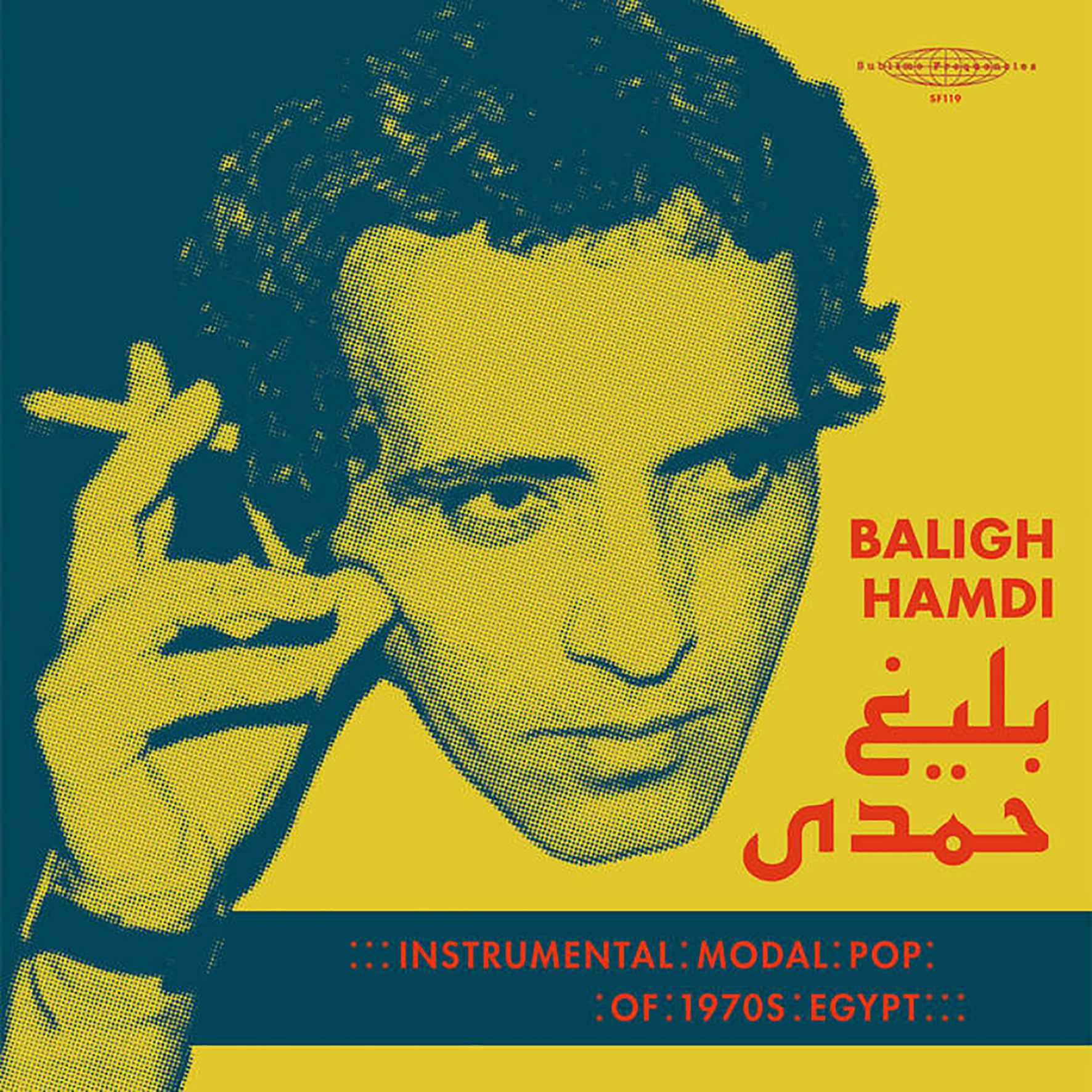 This latest collection continues Sublime Frequencies' impressive hot streak of releases this year, as Hisham Mayet has curated a selection of elusive instrumental pieces from "a towering figure in Arabic cultural history." Unsurprisingly, I have not knowingly encountered Hamdi's work before, as SF is always way ahead of the curve in digging up revelatory artists unfamiliar to most western ears, but Mayet and the songs he selected make a convincing case that Hamdi was indeed behind "some of the hippest music coming out of the Middle East from the late 1960s and throughout the 1970s." It was rare for Hamdi's work to surface under his own name, however, as most of his success and influence came from composing for a host of famous Arabic singers or scoring films, plays, and television. This collection, however, focuses on a very specific era of Hamdi's career in which Mayet believes the composer and his Diamond Orchestra perfected a modernized "international music" that elegantly combined "Eastern tinged jazz, theremin draped orchestral noir, and mid-east and eastern psychedelic exotica." Naturally, most of the original albums are exasperatingly elusive and expensive, but the rarity of these songs is secondary to their quality. This scratches roughly the same itch as other classic SF "pop" compilations like Bollywood Steel Guitar and Shadow Music of Thailand.
This latest collection continues Sublime Frequencies' impressive hot streak of releases this year, as Hisham Mayet has curated a selection of elusive instrumental pieces from "a towering figure in Arabic cultural history." Unsurprisingly, I have not knowingly encountered Hamdi's work before, as SF is always way ahead of the curve in digging up revelatory artists unfamiliar to most western ears, but Mayet and the songs he selected make a convincing case that Hamdi was indeed behind "some of the hippest music coming out of the Middle East from the late 1960s and throughout the 1970s." It was rare for Hamdi's work to surface under his own name, however, as most of his success and influence came from composing for a host of famous Arabic singers or scoring films, plays, and television. This collection, however, focuses on a very specific era of Hamdi's career in which Mayet believes the composer and his Diamond Orchestra perfected a modernized "international music" that elegantly combined "Eastern tinged jazz, theremin draped orchestral noir, and mid-east and eastern psychedelic exotica." Naturally, most of the original albums are exasperatingly elusive and expensive, but the rarity of these songs is secondary to their quality. This scratches roughly the same itch as other classic SF "pop" compilations like Bollywood Steel Guitar and Shadow Music of Thailand.
While Hamdi is technically the star of the show here, he is actually only one of two legends on these recordings, as Sublime Frequencies favorite Omar Khorshid was one of the many luminaries recruited for Hamdi's Diamond Orchestra. Naturally, there are plenty of cool guitar parts as a result, but no one member of the Diamond Orchestra stands out as particularly virtuosic or essential. Instead, the beauty of these pieces primarily lies in their deft blurring of modern and traditional styles, their inventive arrangements, and the tightness and fluidity of the ensemble. The opening "Ghada" provides an especially impressive example of Hamdi's "modal pop" vision, achieving a delightfully propulsive and swinging blend of surf guitar twang, Bollywood dance party, and bittersweetly soulful Arabic melodies. Obviously, getting all of those elements to fit seamlessly together in the first place was the most revolutionary part of Hamdi's vision, but the execution is also rather dazzling in a general sense, as melodies are constantly traded between instruments while the band nimbly navigates exacting rhythmic variations without breaking a sweat.
For the most part, "Ghada" is very representative of everything that follows, so if that one does not connect, the rest of the album will probably hold no further appeal. Similarly, anyone who loves "Ghada" will likely be thrilled to find eighteen more bangers in a similar vein awaiting them. Within that rich vein lie some delightful variations, however, such as the swooningly romantic strings of "Mawal," which approximates the soundtrack to a imagined Bond film where he teams up with sexy Egyptian dancer/double agent. Elsewhere, "Chaka Chico" initially sounds like the theme for a Spaghetti western ghost story due to its theremin melody, but fluidly shifts tones until it sounds like a love story set in an Middle Eastern cabaret. The closing "Love Story" is another surprise, as Hamdi and his ensemble gamely spice up Francis Lai's famous melody with Arabic instrumentation and inventive fluorishes until it resembles an Egyptian mariachi band crashing an Italian wedding. Beyond that, I was also delighted by the pieces where the orchestra abandon rock rhythms in favor of more Arabic-inspired percussion, as they do on "Gazairia." Just about everything here is great (and fun) though, as Instrumental Modal Pop of 1970s Egypt sounds like some of the coolest and most forward-thinking musicians around teamed up to unknowingly make a flawless and hook-filled surf/exotica/Bollywood masterpiece. I can certainly understand how Hamdi came to be so revered in the Arab world if he brought this level of heat to even his non-hits.
Samples can be found here.
Read More


